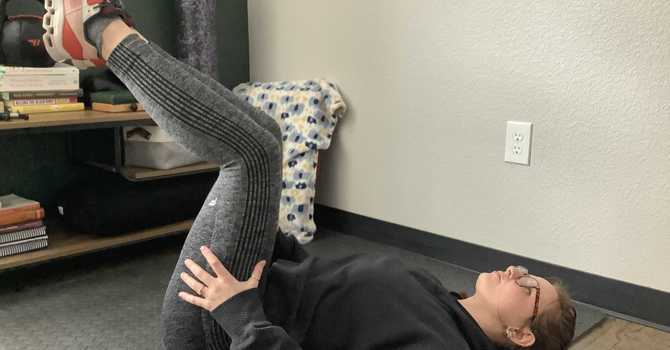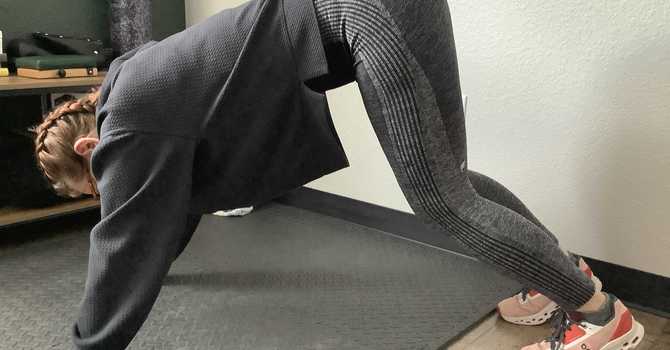
Hey Everyone!
Dr. Zach here to play the role of MythBuster and debunk some common myths surrounding low back pain.
First off, low back pain is the leading cause of disability in the world, and their is mounting evidence to show that our thoughts surrounding low back pain can have an integral role in our recovery process.
Now, I'm not going to bore you, but instead introduce the Top 10 Myths surrounding low back pain as presented by Dr. Peter O'Sullivan. After that, I'll introduce 10 facts surrounding low back pain that we all should be aware of!
For the context of saving my fingers the extra few letters of typing, I'll refer to Low Back Pain as LBP.
Also, I will provide some explanation as to some of the myths, as well as the facts about LBP.
Top 10 Myths of LBP
- LBP is usually a serious medical condition
- Not so much! LBP is rarely indicative of serious medical conditions such as cancer, infection or fracture. It is our job and specialty as chiropractors to rule out these conditions before beginning treatment.
- LBP will become persistent and deteriorate later in life.
- Most episodes of LBP improve. There is no evidence to support LB
- Persistent LBP is always due to tissue damage
- Pain does NOT equal damage. Say it with me again. PAIN DOES NOT EQUAL TISSUE DAMAGE. Often times when we experience injury, the muscular tissue (if treated properly) will return to a functional state. However, our nerves don't forget pain! That is why often times we can experience a familiar (or new) pain in a given area.
- Scans (x-ray, MRI, CT) are always needed to detect the cause of LBP.
- Findings on x-rays such as degeneration, pelvic unleveling & others have shown little to no association with pain symptoms. While scans can be useful, they should be used at the appropriate time!
- Pain related to exercise and movement is always a warning that harm is being done to the spine and a signal to stop an activity.
- Proper movement and exercise in all directions of the spine is not only safe, but healthy for the joints and muscles of the spine to provide things such as support, stability and movement.
- LBP is caused by poor posture while sitting, standing & lifting.
- While posture is important to be aware of in given situations, posture itself is a poor predictor of pain.
- LBP is caused by weak 'core' muscles and having a strong core protects against future LBP.
- We commonly think that a strong core is the key to avoiding LBP. Maybe strong isn't the right word, but an ENGAGED core. If we sit around flexing our abs all day, it can create further issues. Focusing on things such as belly breathing and planking are great 'core-engaging' activities.
- Repeated spinal loading results in "wear & tear" & tissue damage.
- Putting the spine through a wide variety of range of motions as well as different loads can build strength to the spine.
- Pain flare-ups are a sign of injury and require rest.
- Just as we said before, pain doesn't equal tissue damage or injury! It also certainly requires movement. One common misconception people have with LBP is that they should rest and avoid movement. Research actually those with a higher fear of movement are less likely to recover or recover more slowly. Rest is important, but we need to make sure to keep moving. "Motion is lotion".
- Treatments such as strong medications, injections and surgery are effective and necessary, to treat LBP.
- At this point, the research is overwhelmingly in favor of conservative care first before drugs or surgery for a majority of muskuloskeletal conditions.
Okay, so those are the top ten myths of LBP according to Dr. Peter O'Sullivan. These myths are often created from the unknown, fear and poor communication of LBP between practitioners and patients.
Now, I want to turn to 10 Facts surrounding LBP. Many of these were addressed in the responses, so my explanations under each will be brief!
10 Facts on LBP
- LBP is not a serious life-threatening condition
- Most episodes of LBP improve, and LBP does not get worse with age.
- A negative mindset, fear-avoidance behavior, negative recovery expectations, & poor pain coping behaviors are more strongly associated with LBP than tissue damage!!
- Okay, lets look at this one. Research has begun to suppor a more biopsychosocial model approach to healthcare. This meaning that there is a biological, psychological, and social element to everyone's pain experiences and should be treated as such. Rarely in clinical settings is there simply one component affecting a person. Many times patient conditions are multi-factorial and require in-depth examination in order to determine a proper diagnosis.
- Our views and expectations for our LBP play a role, maybe even more so than injury itself.
- Scans do not determine prognosis of the current episode of LBP, the likelihood of LBP disability, and do not improve LBP outcomes.
- Graduated exercise and movement in all directions is safe and healthy for the spine.
- Like we said before, movement is often times incredibly beneficial for LBP. That's why we always have take home exercises to address mobility and stability issues!
- Spine posture during sitting, standing and lifting does not predict LBP or its persistence.
- A weak core does not cause LBP, and some people with LBP tend to overtense their ‘core’ muscles. While it is good to keep the trunk muscles strong, it is also helpful to relax them when they aren’t needed.
- Spine movement and loading is safe and builds structural resilience when it is graded.
- Pain flare-ups are more related to changes in activity, stress and mood rather than structural damage.
- One last time, PAIN DOES NOT MEAN ANY TISSUE HARM IS BEING DONE. Sorry for yelling.
- Effective care for LBP is relatively cheap and safe. This includes: education that is patient-centered and fosters a positive mindset, and coaching people to optimize their physical and mental health (such as engaging in physical activity and exercise, social activities, healthy sleep habits and body weight, and remaining in employment)
So there they are. 10 myths of LBP & 10 facts of LBP.
I hope this help answers some questions, alleviates fears, or at the very least is informational in some shape or form.
Additionally, check out the YouTube video below as Dr. Zach has special guest, Dr. Williamson, on to further discuss some of these myths. It was wonderful to have Dr. Williamson on as he offers a wealth of knowledge in scientific literature as well as patient care.
As always, reach out with any questions you have!
Have a Wednesday, everyone.
Dr. Zach
https://bjsm.bmj.com/content/early/2019/12/31/bjsports-2019-101611





